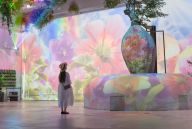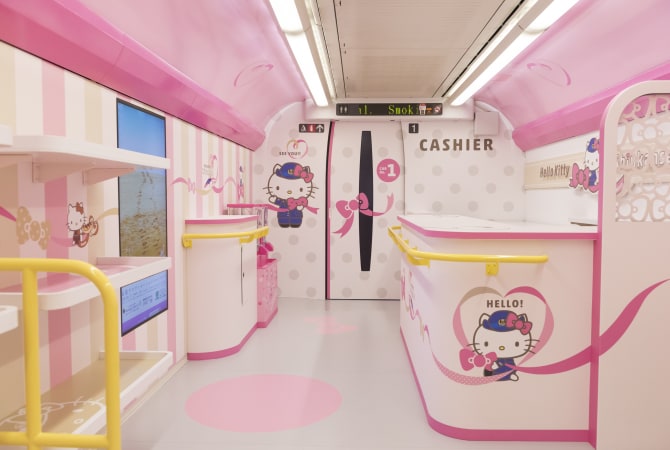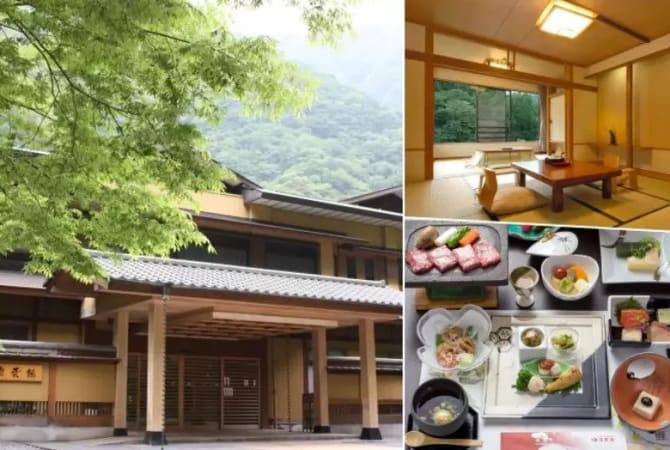Let's Go to an Onsen and Enjoy It Like Locals Do
Here’s the 101 on bathing in an onsen — and several hot spring towns with convenient access from major cities
Here’s an incredible statistic for you: Japan has over 27,000 onsen (hot spring) sources. That’s a total of 2.6 million litres of hot spring water gushing out every minute! It’s little wonder that the country is a nation of hot spring lovers. Many people bathe in onsen for health benefits such as improved blood circulation or pain relief, but it’s also one of the most relaxing, stress-relieving activities you can do. And isn’t that the entire point of going on vacation?
Japanese onsen have specific rules to abide by. If you’re visiting Japan for the first time, you’ll need to familiarize yourself with onsen etiquette, including what you CAN and CANNOT do. Read on for a quick guide to onsen etiquette and some recommendations for great hot spring towns to add to your bucket list.

Photo Credit: Fast&Slow / PIXTA
Onsen Etiquette 101
You will have to get naked — (almost) no exceptions
As at home, so in the onsen. Full nudity is mandatory at almost all hot springs, which are segregated by sex. The exception is at the tiny handful of increasingly rare mixed-gender onsen, where you can either wear swimsuits or some kind of body covering if they provide them.
Feeling self-conscious during your first time at a regular onsen is understandable, but once you get in, you’ll realise that nobody cares about how you look since everyone else is naked, too. It’s optional, but you can use a small washcloth to cover your private parts.
That being said, if you’re still not keen on sharing with everyone else, some ryokan (inns) offer private bath rentals, usually in 45- to 60-minute increments.
Tattoos are still a no-go at many onsen
While many onsen establishments have begun to relax their rules in recent years, the vast majority still do not allow tattooed guests to use their baths due to a lingering negative perception of tattoos in Japanese culture. While some onsen facilities may offer cover seals (a kind of skin colored plaster) that can cover smaller tattoos, it’s best to do your research by checking with the facility and purchasing in advance before visiting; even better, consider booking a private bath.
Shower first, soak later

Every onsen will have a shower area where you will scrub and rinse off before going into the hot spring. Photo Credit: αR / PIXTA
Make sure you clean yourself properly before soaking in the onsen water. That means sit on small stools in the shower area and wash the body with the provided shower or small bucket and make sure there's no trace of soap left. After you are done, rinse the stool and wooden basin to keep them clean and hygienic for the next user.
Don’t put your head, hair, or washcloth underwater

Photo Credit: 8x10 / PIXTA
Onsen aren’t swimming pools. It’s bad form to submerge your head in the water. You should also keep your small washcloth or towel out of the water by placing it either at the side of the bath or on top of your head. For long-haired folks, you can use the towel to wrap your hair up so that it doesn’t touch the water, either. Some onsen facilities do offer complimentary hair caps or hair bands for their customers, but you are still advised to bring your own accessories for good.
Hot tip: try the outdoor bath

Photo Credit: Shiryu / PIXTA
The only bath better than a regular onsen is an outdoor onsen! Many hot springs are located near mountains, which often means beautiful natural surroundings while you bathe. There are few better ways to relax than staring at Mother Nature’s landscapes while soaking your tired muscles in hot water. It is even great to enjoy outdoor onsen during cool and cold weather!
4 onsen that are easy to access from major cities
Many onsen are located in remote volcanic areas, and may not be the most convenient for travellers to navigate to. Fret not – here are four onsen you can try if you prefer easy access.
Kusatsu Onsen (Gunma Prefecture)

Yubatake, Kusatsu Onsen, Gunma
One hot spring town that’s easily accessible by a combination of train and bus from Tokyo is Kusatsu Onsen in Gunma Prefecture. With the largest volume of naturally occurring onsen water in Japan, its sulphurous waters are beloved by residents and tourists alike. Some even claim that the waters will cure any ailment except lovesickness! The town is especially picturesque in winter, and offers excellent hiking opportunities during the warmer months.
Unique to Kusatsu is the “yubatake.” A literal translation to “hot spring fields,” this refers to the series of wooden chutes in the centre of town. Steaming hot, mineral-rich hot spring water gushes from underground, and flows through these chutes to cool down slightly before being diverted to various inns and bathhouses in town.
Location Information
Kusatsu Onsen (Website)
Address: 28 Kusatsu, Kusatsu-cho, Agatsuma District, Gunma Prefecture 377-1711
How to get there: From Tokyo Station, take the Shinkansen to JR Karuizawa Station. From JR Karuizawa Station, ride a local bus for about 1 hour and 20 minutes to Kusatsu Onsen.
View on map
Kinosaki Onsen (Hyogo Prefecture)

If you’re visiting the Kansai region, Kinosaki Onsen in Hyogo Prefecture is an excellent option for travellers of all demographics. Its history stretches back close to 1,300 years, and it has the old-world atmosphere to match: the town has maintained much of its charming traditional architecture and the serene central willow-lined canal.
Whether or not you stay at one of Kinosaki Onsen’s many inns and hotels, the “onsen meguri” or “onsen pilgrimage” around the town’s six bathhouses is unmissable. While in past centuries you would have had to hike up the nearby mountain to Onsenji Temple and pray to the onsen guardian before being allowed to bathe in the “seven mystic onsen,” these days, you simply have to purchase a day pass for unlimited entry to all of them. They’re all within walking distance of each other, too.
Location Information
Kinosaki Onsen (Website)
Address: 78 Yushima, Kinosaki-cho, Toyooka City, Hyogo Prefecture, 669-6101
How to get there: Kinosaki Onsen Station can be reached by JR Limited Express trains from Kyoto, Osaka, Sannomiya, and Himeji.
View on map
Nyuto Onsen (Akita Prefecture)

The milky waters of Nyuto Onsen in Akita Prefecture. Photo Credit: Akita Prefecture
For a hot spring town further off the beaten path, consider Nyuto Onsen in Akita Prefecture. Located in the Towada-Hachimantai National Park, it consists of seven onsen resorts and has a rich history of over 350 years. One of the oldest operating ryokans in the area even has rooms that date back to the Edo period (1603–1867).
Each of the seven resorts has its own hot spring source, meaning that visitors are spoiled for choice in terms of baths and water, as well as their choice of accommodation and natural scenery. The primaeval beech forests in the area are truly stunning! Unusually, many ryokan in Nyuto Onsen also feature mixed-gender pools, which are still common in this part of Japan. Best of all, it’s accessible by public transportation despite its secluded location.
Location Information
Nyuto Onsen (Website)
Address: 2-1, Komagatake, Lake Tazawa, Senboku City, Akita Prefecture, 014-1201
How to get there: From JR Tokyo Station, take the Akita Shinkansen Line to Tazawako Station. From Tazawako Station, take the bus to Nyuto Onsenkyo (about 40 minutes).
View on map
Yufuin Onsen (Oita Prefecture)

Yufuin Onsen. Photo Credit: © OITA
Yufuin Onsen in Oita Prefecture is another good choice for first-time visitors to Japan. Easily accessible by limited express train or bus from Fukuoka Prefecture (either Hakata Station, Tenjin Bus Centre, or Fukuoka Airport), this rural hot spring town is encircled by mountains and is altogether a scenic destination to spend a few days in.
The beautiful scenery notwithstanding, Yufuin Onsen has hot springs throughout the town across three different areas —Yufuin, Yunohira, and Tsukahara — each with slightly different medicinal properties. For instance, Yufuin, which has the second-highest hot spring water flow in Japan, is thought to be beneficial for arthritis and neuralgia. The waters at Yunohira and Tsukahara are believed to be effective in treating gastrointestinal disorders and skin conditions respectively. You can even drink the water at some of these onsen for health benefits.
After soaking in the baths, visitors can spend the day at the town’s various art museums, boutiques, and cafes, or simply enjoy the scenery around Lake Kinrin.
Location Information
Yufuin Onsen (Website)
Address: 8-5 Kawakita, Yufuin-cho, Yufu City, Oita Prefecture, 879-5114
How to get there: From Hakata Station, take a JR limited express train to Yufuin Station. These trains run several times a day. The journey takes around 2.5 hours.
View on map
Conclusion
Now you are well-prepared for a Japanese onsen experience! If it’s your first time travelling to Japan, consider including a hot spring town in your itinerary. We hope this article inspires you to add some onsen time into your travels — and perhaps visit an area of Japan that’s new to you.
Explore Japan with us. Follow us on Facebook and Instagram for more bite-sized information about Japan!






















































